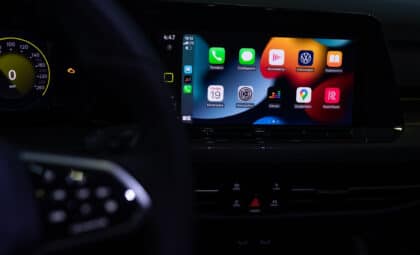With all the hate on bumper stickers, it’s nice to see some love
Photo: mmarchin via Flickr/cc
People love to personalize their cars so that passing strangers can gain a clear idea of what a driver’s life, beliefs, priorities, and achievements are. While this is mostly achieved through social media these days, a popular way to express oneself in past decades was to adhere a printed, pre-written message on one’s vehicle in the form of a bumper sticker.
As the name suggests, bumper stickers stick to a vehicle’s bumper and express a political, religious, humorous, nerdy, athletic, or commercial interest held by the vehicle’s owner.
How did these adhesive messages originate and why were they created?
Protect Yourself: Advice on how to protect your car’s computer from getting hacked
Why Bumper Stickers Have Stuck Around
Posting advertisements on vehicles wasn’t uncommon in the past. Even back before the invention of the motorized carriage, local businesses sometimes advertised on signs, flags, or sides of buggies. Following the advent of motorized transportation, mass marketing and merchandising developed and technology improved that could withstand wear and weather on the road. What had been wooden and paper signs would soon become more durable and prevalent.
World War II resulted in the development of many new technologies, including florescent ink, stickers, and widely-available vinyl. Forest P. Gill, a silkscreen printer from Kansas, took some of this technology and applied to self-adhesive advertisement stickers for vehicles. After the war, tourism boomed, too. The further that vehicles could travel, the more prevalent tourist ad decals became—not always voluntarily applied, either. In the 1952 presidential election, political bumper stickers were first seen—a method still seen today to announce affiliation on the go.
The synthetic plastic polymer labels of the late 20th century were most prevalent in the United States, as opposed to many other countries around the world.
Bumper stickers have always been about pride—pride in where you’ve traveled, in your child’s grades, in your home team, in your political beliefs. It’s no wonder, then, that psychology studies show a correlation between having bumper stickers and exhibiting road rage. If you don’t have a bumper sticker, then, perhaps it’s a good thing.
For tips on removing an old bumper sticker, read this.
Peel It Off! Removing old bumper stickers is just one way to increase your car’s trade-in value
Sources: Navigator, The Atlantic










